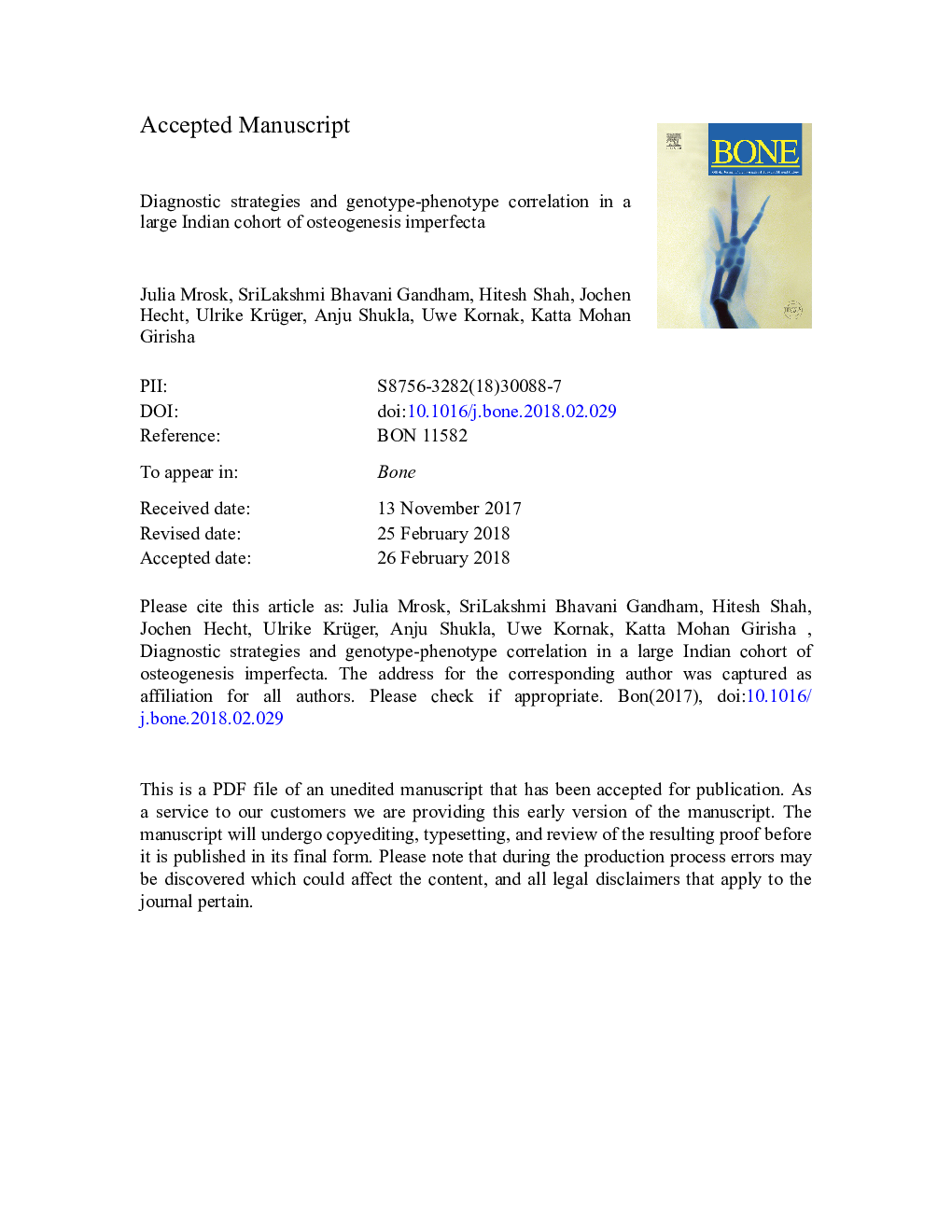| کد مقاله | کد نشریه | سال انتشار | مقاله انگلیسی | نسخه تمام متن |
|---|---|---|---|---|
| 8624980 | 1568109 | 2018 | 40 صفحه PDF | دانلود رایگان |
عنوان انگلیسی مقاله ISI
Diagnostic strategies and genotype-phenotype correlation in a large Indian cohort of osteogenesis imperfecta
ترجمه فارسی عنوان
استراتژی های تشخیصی و همبستگی ژنوتایپ-فنوتیپ در یک گروه بزرگ هندئی ناقص استئوژنز
دانلود مقاله + سفارش ترجمه
دانلود مقاله ISI انگلیسی
رایگان برای ایرانیان
کلمات کلیدی
موضوعات مرتبط
علوم زیستی و بیوفناوری
بیوشیمی، ژنتیک و زیست شناسی مولکولی
زیست شناسی تکاملی
چکیده انگلیسی
Osteogenesis Imperfecta (OI) is a clinically and genetically heterogeneous disorder. Although differential diagnosis is greatly facilitated by next generation sequencing, its availability can vary considerably. In this study, we compared targeted gene panel or exome sequencing with clinical scoring and grouping in a cohort of 50 OI index patients recruited by a single Indian clinical center in an unselected fashion. In 48 patients we observed a total of 24 novel mutations and 24 known OI mutations, of which several were recurrent. In one patient neither gene panel nor exome sequencing revealed any significant mutation and another patient harbored a class III COL1A1 intronic variant. The percentage of autosomal recessive forms due to mutations in BMP1, FKBP10, LEPRE1, SERPINF1, and WNT1 was unusually high (48%). Grouping according to phenotypic and radiographic features revealed four individuals with Bruck syndrome due to FKBP10 mutations, three patients with hypertrophic callus caused by IFITM5 mutations, and twenty with pronounced bone bowing, of which eight carried WNT1 mutations. There was a clear correlation between genotype and phenotype severity: IFITM5Â =Â LEPRE1Â >Â WNT1Â >Â SERPINF1Â >Â COL1A1 (qualitative)Â >Â BMP1Â >Â FKBP10Â >Â COL1A2 (qualitative)Â >Â COL1A1 (quantitative)Â >Â COL1A2 (quantitative). In one patient we found heterozygous variants in COL1A1 and COL1A2 inherited from parents without an obvious bone phenotype indicating that both variants might contribute to the phenotype. Our findings demonstrate the clinical utility of gene panel testing for OI, but in cases with contractures, hypertrophic callus formation, or - to some extent - extensive bowing single gene analysis might still be more cost-effective.
ناشر
Database: Elsevier - ScienceDirect (ساینس دایرکت)
Journal: Bone - Volume 110, May 2018, Pages 368-377
Journal: Bone - Volume 110, May 2018, Pages 368-377
نویسندگان
Julia Mrosk, Gandham SriLakshmi Bhavani, Hitesh Shah, Jochen Hecht, Ulrike Krüger, Anju Shukla, Uwe Kornak, Katta Mohan Girisha,
